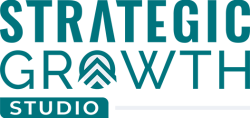TAM, SAM, SOM: A Realistic Way to Size Your Market
Market sizing isn’t just for pitch decks. It’s a critical part of your business plan’s market analysis section—and one of the fastest ways to gain credibility with lenders and investors.
Why Market Sizing Matters in a Business Plan
If you’re writing a business plan for funding, you need more than a good idea—you need a data-backed argument for why your business can thrive. Market sizing helps you answer key questions:
- How big is the opportunity?
- What portion of the market can you realistically serve?
- What will it take to get there?
This is where TAM, SAM, and SOM come in. These acronyms represent three levels of market sizing:
- TAM (Total Addressable Market)
- SAM (Serviceable Available Market)
- SOM (Serviceable Obtainable Market)
Each step narrows your focus and increases your credibility.
Breaking Down TAM, SAM, and SOM
TAM: Total Addressable Market
This is the big-picture number: the total demand for your product or service if you had 100% of the market.
Example: If you sell wellness supplements online, your TAM might be the global health supplement market, worth $163B+.
Why it matters: TAM gives funders context for the size of your industry and its potential growth.
SAM: Serviceable Available Market
SAM narrows TAM to the segment you can actually serve based on your business model, product, and geography.
Example: If you only sell in the U.S. and target women over 40, your SAM could be $12B.
Why it matters: SAM shows that you understand your target market—and are focused.
SOM: Serviceable Obtainable Market
SOM is the portion of SAM you believe you can realistically capture in the next 1–3 years. It takes into account your budget, team, competition, and marketing reach.
Example: If your launch plan and budget could reasonably win 0.5% of your SAM, your SOM might be $60M.
Why it matters: SOM is where your forecasts and financial projections should start. It’s also where lenders will assess your assumptions.
Why This Matters to Lenders and Investors
If you’re preparing a market analysis business plan section, these numbers build a data-driven foundation for:
- Sales projections
- Marketing strategy
- Investor pitches
- SBA loan underwriting
Lenders want to know your market is large enough to support repayment. Investors want to know there’s room to scale. Without TAM/SAM/SOM, you’re guessing.
How to Estimate TAM, SAM, and SOM
- Use industry research: Start with IBISWorld, Statista, government data, or analyst reports.
- Filter by geography and demographics: This helps you narrow TAM into SAM.
- Apply a bottom-up approach to SOM: Base your assumptions on lead generation, conversion rates, sales capacity, and average customer value.
Pro tip: If you’re applying for an SBA loan, your SOM estimate should align closely with the first 1–3 years of your financial projections.
Common Mistakes to Avoid
- Using only top-down data: Without a bottom-up approach, your numbers can seem inflated.
- Failing to link SOM to revenue: SOM should tie directly into your sales forecast.
- Overestimating early growth: Be optimistic but realistic—especially in SBA and bank-ready plans.
Final Thought: Size the Market, Win the Room
TAM, SAM, and SOM aren’t just buzzwords. They’re tools to show that you’re thinking clearly about opportunity and risk.
If your business plan doesn’t clearly define your market opportunity, lenders may question your projections. Investors may question your leadership.
Make your plan more fundable.
Start with a credible market analysis section, and build from there.




